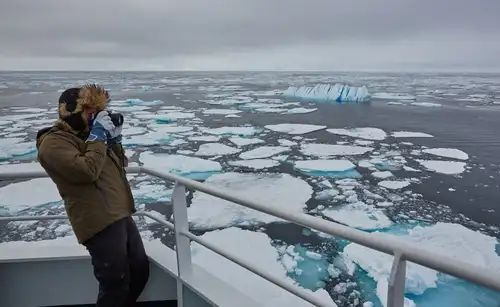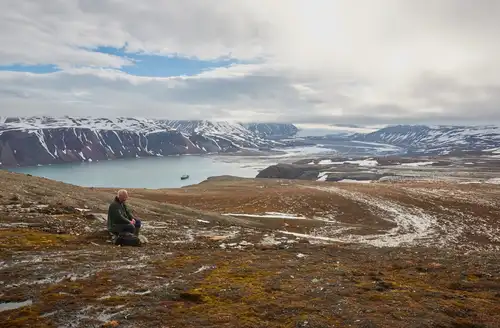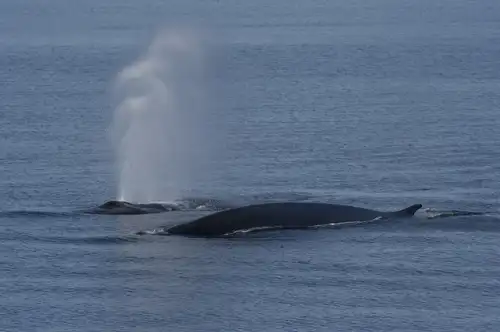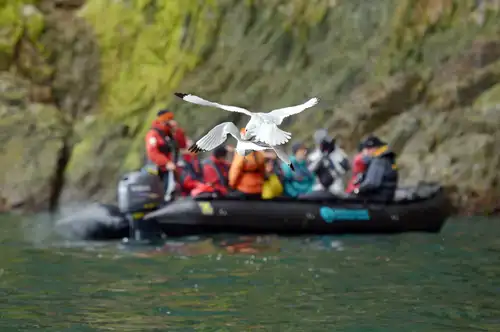If they knew their way home, why not follow them? Equipped with GPS and compass, we approached the cliffs by zodiac. First, we heard the noise from the colony – the distinct calls of guillemots, kittiwakes, and Glaucous gulls. Then the cliffs gradually emerged from the mist.
Standing over 100 meters tall, they were far more imposing than we had imagined. Some of the rock towers jutted out like fingers. In other areas, Alkefjellet – the mountain of the guillemots – resembled a medieval castle. It felt like stepping into a movie scene.
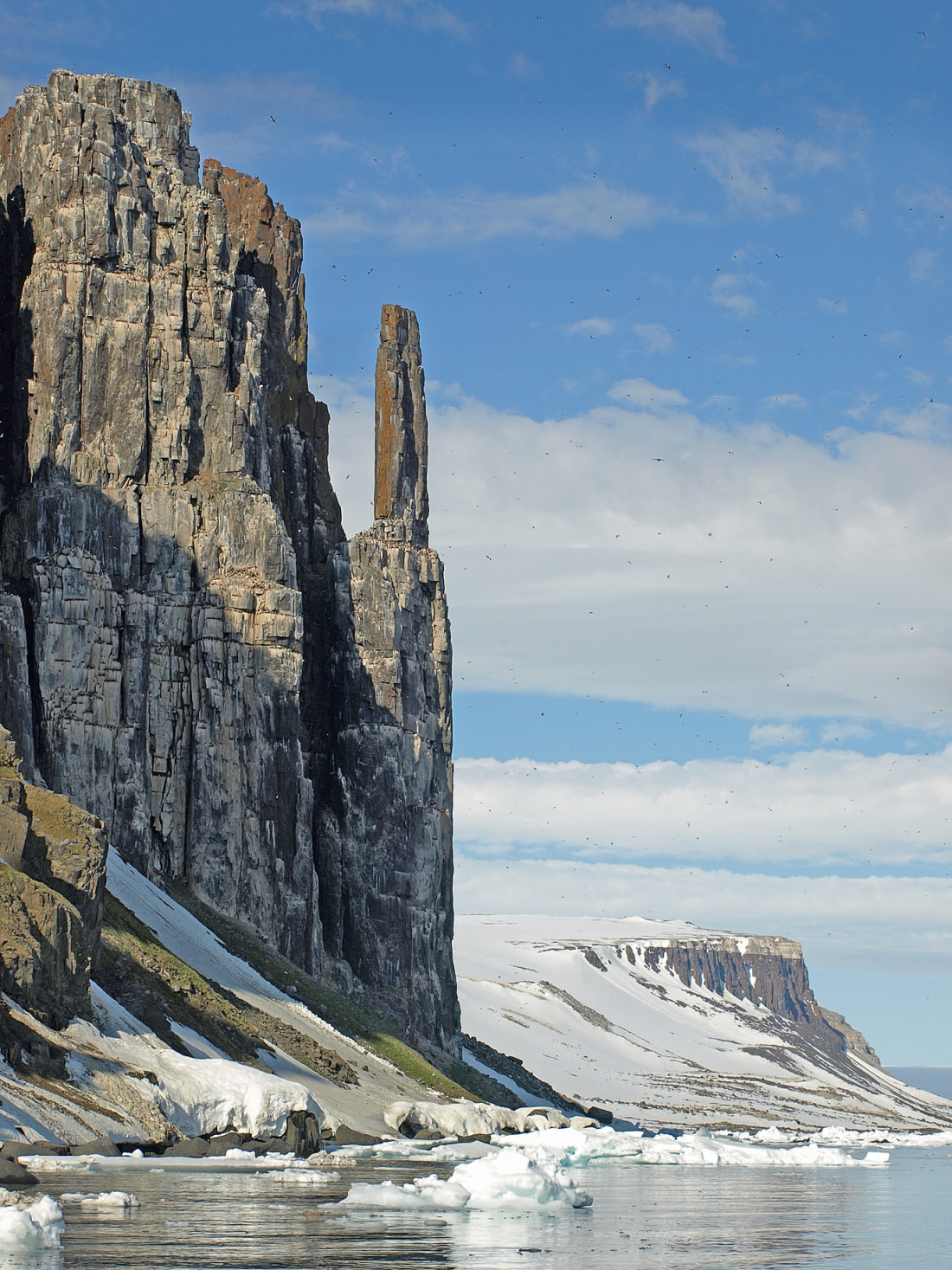
Fighting Brünnich’s guillemot at Alkefjellet
Alkefjellet may not be Spitsbergen’s largest bird cliff, but it is certainly among the most spectacular and easily accessible from the sea. As we slowly glided past the steep rock walls teeming with birds, we watched in awe: guillemots constantly taking off from the ledges, returning, splashing in the water, diving, and re-emerging. Some droppings landed on our zodiac and guano-proof clothing; we didn't mind too much as it is said to bring luck.
Two guillemots were fiercely fighting, slapping each other with their wings and trying to use their sharp beaks as weapons. They were so engrossed in their conflict that they drifted right alongside the zodiac. They even continued their battle underwater! When the fight ended after a few minutes, one bird was bleeding, and the other looked quite disheveled as well.
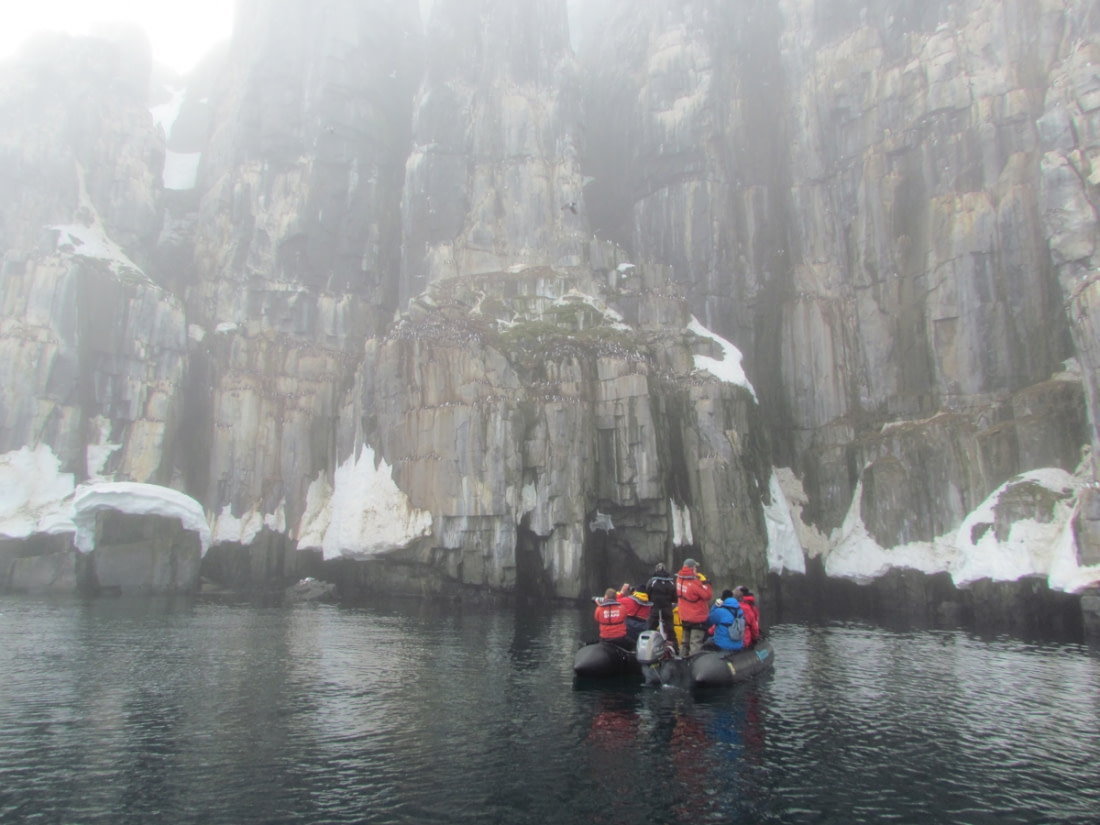
A magic Alkefjellet morning
By the time we reached the glacier at the northern end of the colony, we had seen and listened to thousands of birds, felt very tiny in our sturdy rubber boat towered by the rock (and bird) masses, found one of the greenish eggshells shattered on a ledge, and observed two Arctic foxes patrolling the foot of the cliff. They moved across steep tundra and snow fields, nose down, ears alert, searching for a scent or a sound.
As we finally turned around, the sun broke through, reflecting on the water while the mist still clung to the steep walls. It was as eerie as it could possibly get – a stunning finale to a magical Alkefjellet morning.
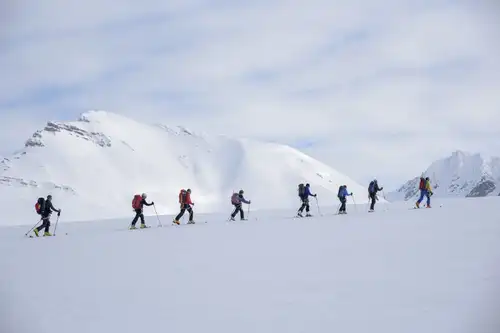

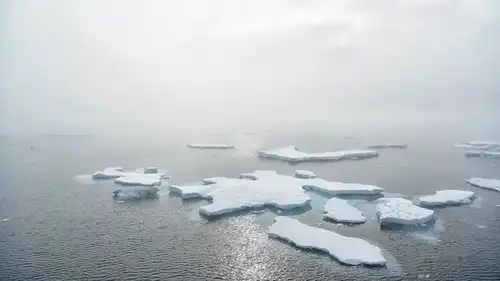

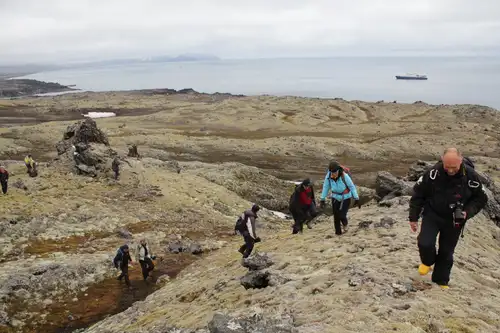
Related Trips
Blog



Traditional Lifestyles of the Inuit
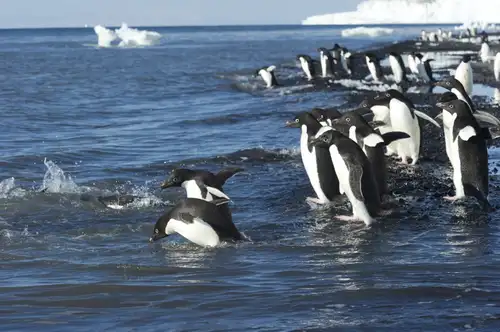
Adélie penguins in the Ross Sea - Antarctica

Polar Cuisine in Pictures
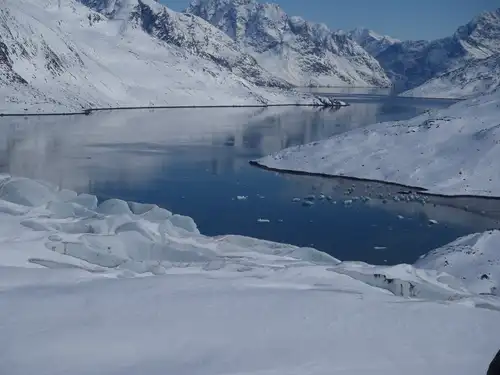
How and When Did Greenland Become Covered in Ice?
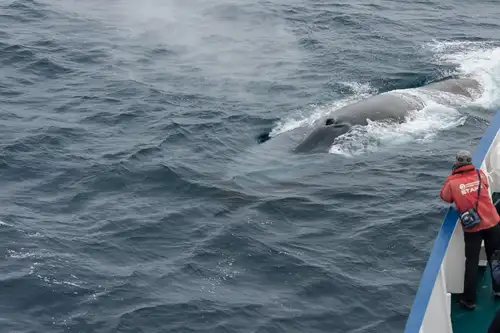
10 Bountiful Blue Whale Facts
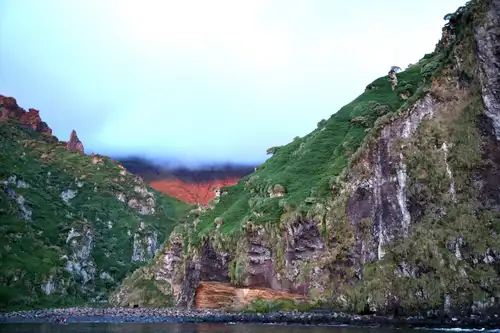
Gough Island: Seabird Capital of the South Atlantic
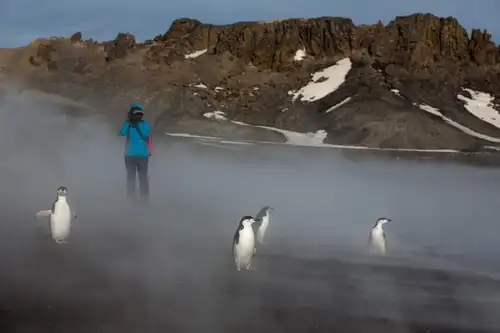
Graham Land: A landscape dominated by volcanoes
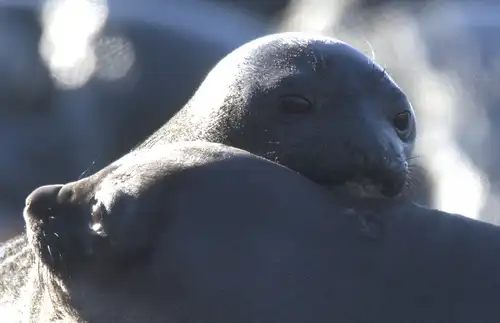
South Georgia in Spring
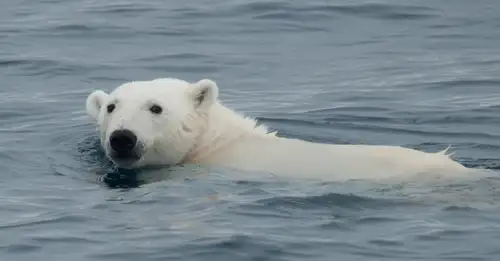
Polar Bear Sets Impressive New Diving Record
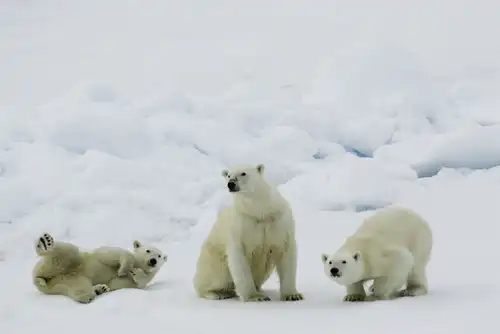
Polar bear encounter in Spitsbergen
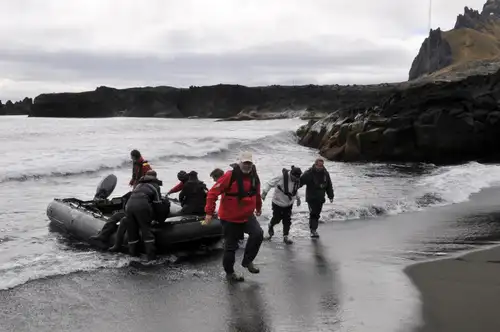
A visit to the fascinating island of Jan Mayen
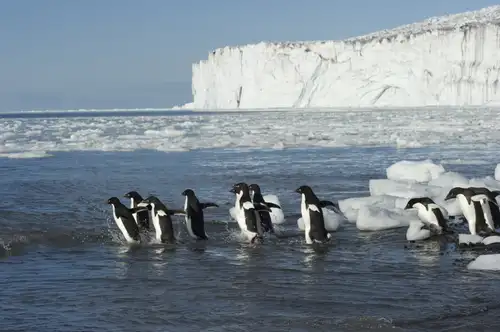
The bio-richness of the Ross Sea
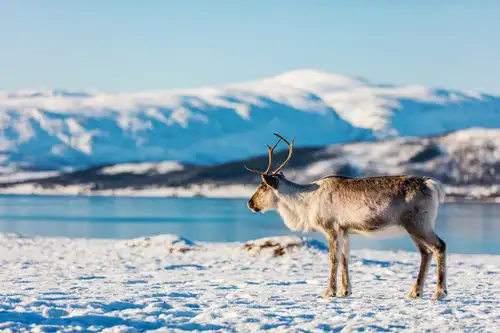
Eight Engaging Reindeer Facts
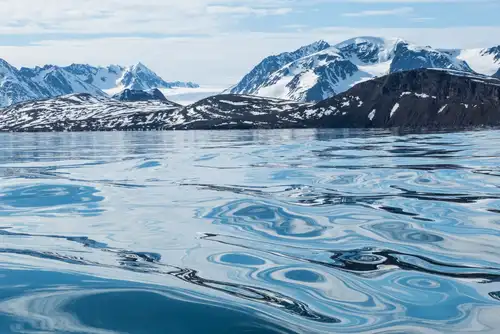
Freshwater ecosystems in the Arctic
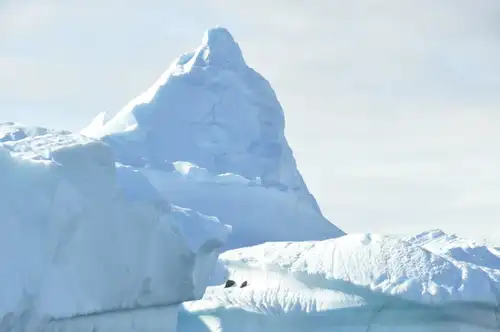
Life migrating through the Polar Front
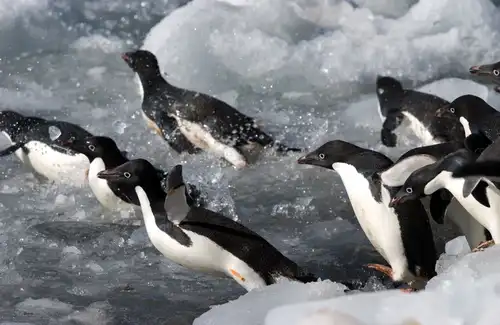
Adélie Penguins: the Little People of the Antarctic
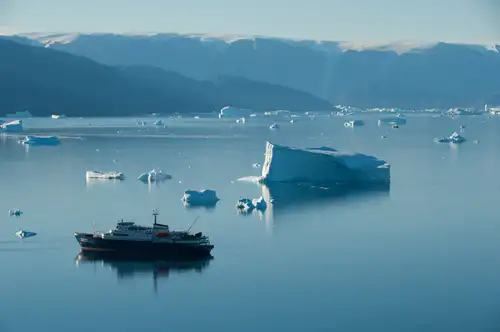
10 Common Misconceptions About the Arctic
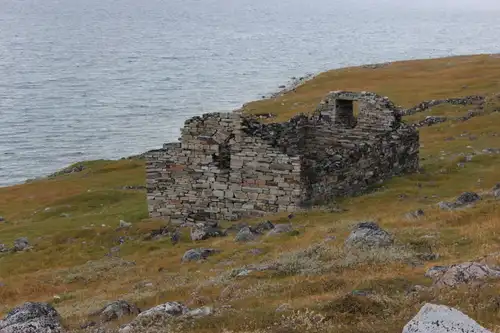
Greenland's History: When Vikings Ruled the Ice Age
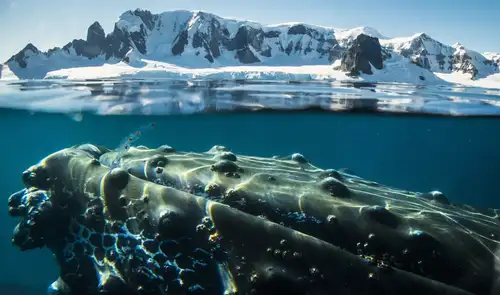
Baleen Whales – The Gentle Giants of the Ocean




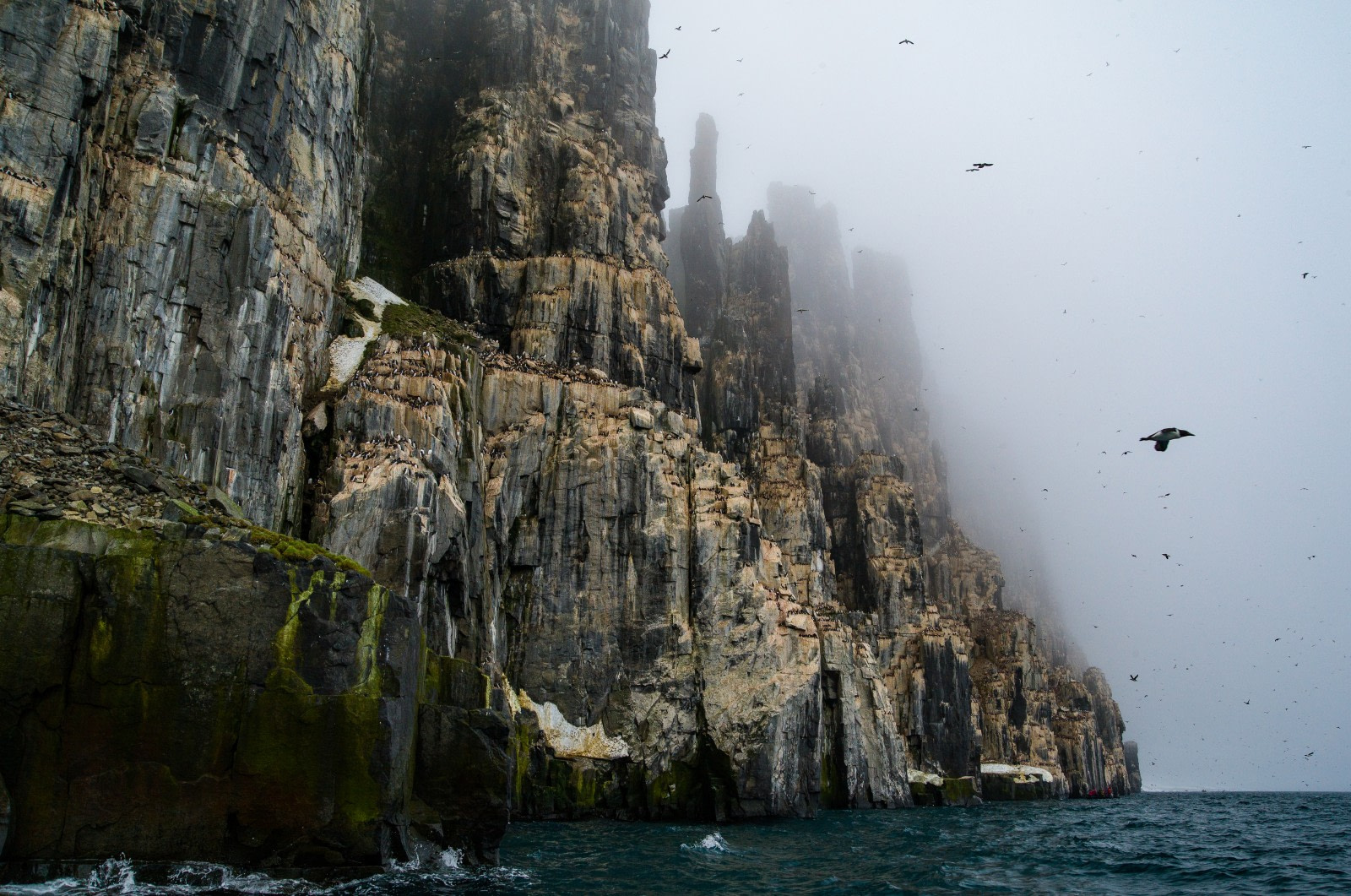

 8 Days / 7 Nights
8 Days / 7 Nights
